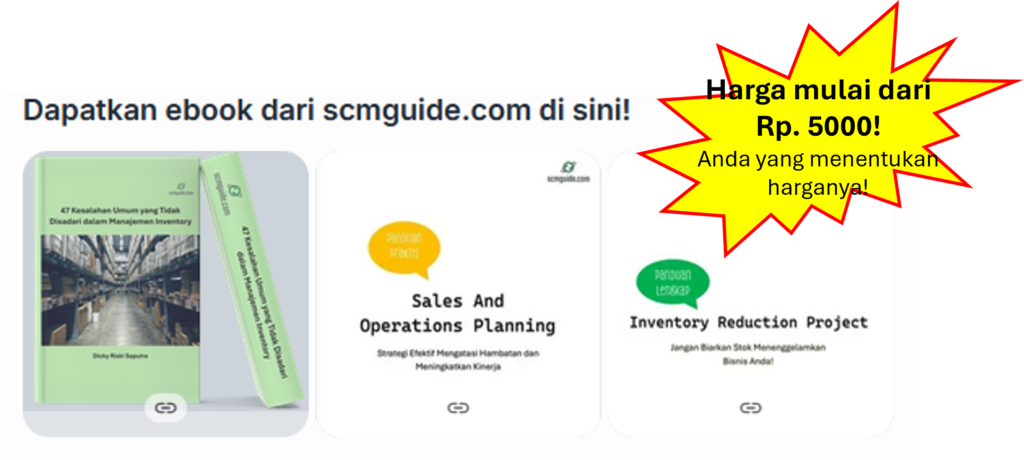In today’s interconnected world, businesses face unprecedented challenges when global conflicts disrupt their operations. Supply chains that once seemed stable can suddenly crumble, and the focus can shift from growth to survival. It’s a tough reality, but in some situations, just staying afloat may be the best outcome possible. Here, we’ll explore the ways in which global conflict impacts supply chains and what businesses can do to adapt, survive, and, ideally, come out stronger.
Before we go further into this topic, don’t forget to follow my LinkedIn account. You’ll get more helpful insights on supply chain management there.
Table of Contents
Immediate Impacts of Global Conflict on Supply Chains
When a global conflict erupts, its effects on supply chains are often immediate and far-reaching. Companies begin to feel the strain in their logistics, sourcing, and even daily operations. Here’s a closer look at the most common initial impacts.
Material Shortages
One of the most disruptive impacts of conflict is the shortage of raw materials. This can happen when the conflict occurs in or around regions that produce essential materials. When these regions can’t operate normally, businesses worldwide are affected. For example, a tech company relying on rare metals from a conflict zone may find it difficult to manufacture its products, which drives up prices and forces them to look for alternative, often more expensive sources.
Transport and Shipping Delays
Conflict can make certain routes dangerous or inaccessible. This means shipping lanes may close, air routes become limited, and even land routes are at risk. When businesses have to reroute, the longer shipping times add costs and complicate logistics planning. Bottlenecks form as companies fight for limited space on the remaining routes, and delays become unavoidable, forcing businesses to find workarounds that may not be as efficient or affordable.
Labor Shortages
In areas of conflict, the local workforce may be forced to evacuate, join military efforts, or be unable to work due to instability. As a result, companies find themselves facing labor shortages that can halt production or lead to quality issues. Even if the labor force is available, the constant threat of conflict creates a high level of uncertainty, making it difficult for businesses to retain employees.
Currency and Inflation Instability
Conflict leads to economic instability, which can result in currency fluctuations and inflation spikes. Businesses in affected regions, or those working with companies in those regions, may see their costs rise unexpectedly. Currency instability makes it harder for companies to set prices and budget effectively. In some cases, businesses face such volatile pricing that their margins disappear, putting their survival at risk.
Sanctions and Trade Restrictions
Often, governments impose sanctions or trade restrictions on countries involved in conflicts. This can mean that businesses are legally barred from working with certain suppliers, forcing them to seek new partners in other regions. This can be a complex and costly process, as businesses must vet new suppliers and negotiate terms, all while trying to minimize the impact on their operations.
You might also like:
- Blog Series: Complete Guide to Inventory Reduction Projects (Part 1)
- Blog Series: Complete Guide to Inventory Reduction Projects (Part 2)
The Compounding Effect of Prolonged Conflict
When a conflict continues over an extended period, its impacts become more severe. What started as temporary disruptions may turn into long-term issues that reshape the supply chain landscape and challenge even the most resilient businesses.
Chronic Material Shortages
While temporary shortages can often be managed by sourcing from alternative suppliers, long-term material shortages become a major challenge. For industries like electronics, automotive, or healthcare, where specific raw materials are irreplaceable, this can mean a sustained production slowdown. With prolonged shortages, entire industries can suffer, leading to higher costs and reduced output.
Permanent Loss of Infrastructure
Prolonged conflict can lead to the destruction of critical infrastructure like ports, roads, and railways. When these logistics hubs are destroyed, rebuilding them is a long and expensive process. In the meantime, businesses must work around these losses, which often means accepting slower and costlier transport options. For some, these new logistics costs become too high to sustain.
Supplier Closures
As the conflict drags on, some suppliers may be forced to shut down permanently. This leaves businesses scrambling to find replacements, sometimes in entirely different regions. Finding and qualifying new suppliers is time-consuming and can disrupt production schedules. In cases where unique components or highly specialized parts are needed, finding replacements may be next to impossible, leading to halted production.
Worsening Labor Markets
The longer a conflict persists, the greater the impact on the workforce. People migrate out of conflict zones, creating lasting labor shortages. This affects industries that rely on skilled labor, as finding replacements may not be as simple as hiring from another region. In many cases, the skill gap created by such labor losses cannot be easily filled, which can reduce product quality and increase costs.
Increased Geopolitical Tensions and Sanctions
Extended conflicts tend to draw in other nations, leading to a complex web of alliances, sanctions, and trade restrictions. For businesses, this can mean limited market access, new restrictions on certain goods, and a constant need to stay updated on compliance. As sanctions increase, so do the costs of navigating them, often making it impractical for companies to continue operations in certain regions.
Adaptation Strategies for Businesses Facing Prolonged Conflict
When faced with prolonged conflict, businesses must adapt to survive. Some adaptation strategies not only help them endure difficult periods but also build long-term resilience. Here are some approaches to consider.
Diversifying Suppliers
One way to mitigate supply chain risk is to avoid overreliance on any single supplier or region. By establishing relationships with suppliers in different areas, companies can reduce the risk of disruption. Although finding and qualifying new suppliers takes time and money, the flexibility it provides is often worth the investment.
Building Strategic Inventory Buffers
Holding a little extra inventory can give businesses a buffer against supply disruptions. However, this needs to be carefully managed. Excess inventory ties up capital and incurs holding costs, so companies must strike a balance between having enough to cover shortages and not overstocking to the point of financial strain.
Investing in Technology
In times of uncertainty, real-time data can be a business’s best asset. Tools like AI-driven demand forecasting and supply chain management software help companies track inventory, predict shortages, and make informed decisions quickly. Technology also enables scenario planning, so businesses can simulate different outcomes and develop contingency plans.
Forming Strong Partnerships
Building strong, strategic partnerships with suppliers, logistics providers, and even competitors can lead to creative solutions during crises. In times of conflict, these relationships can help secure critical resources or enable cost-sharing arrangements that provide stability. Collaboration with competitors may sound unusual, but in extreme situations, shared resources can help everyone weather the storm.
Enhancing Risk Management
Good risk management practices are critical for navigating prolonged conflict. This includes developing contingency plans, training staff on crisis management, and regularly updating risk assessments. A proactive approach to risk management prepares businesses to respond quickly and effectively to new disruptions, helping them minimize losses.
Flexibility in Product and Market Strategies
Prolonged conflicts may require businesses to shift focus temporarily, prioritizing products or markets that are less impacted by disruptions. This might mean scaling back on certain offerings, exploring new markets, or even pausing operations in regions with high risk. By staying flexible, businesses can adjust to changing conditions and continue operating where possible.
You might also like:
- Blog Series: Complete Guide to Inventory Reduction Projects (Part 3)
- Blog Series: Complete Guide to Inventory Reduction Projects (Part 4)
When Survival Becomes the Goal
As conflicts drag on, many businesses find that simply surviving is a major accomplishment. With profitability challenging, the focus shifts to maintaining essential functions, managing cash flow, and retaining core customers. Here’s how companies can refocus on survival.
Cash Flow Management
In a survival-first scenario, cash flow is king. Businesses prioritize liquidity, cutting non-essential expenses to ensure they can cover critical costs. Maintaining a healthy cash flow allows companies to stay operational during lean times, giving them a lifeline when revenue is unpredictable.
Operational Efficiency and Cost Control
Staying lean and efficient becomes a priority, as businesses must maximize every dollar. This often involves automating processes where possible, reducing waste, and focusing on core products or services. The goal is to streamline operations to survive on limited resources, which may also improve efficiency for the long term.
Core Customer Retention
In times of crisis, it’s often easier to retain existing customers than to attract new ones. By focusing on customer retention and building loyalty, businesses can maintain a stable revenue base, even if it’s smaller than before. Long-term relationships provide a steady income stream and can be crucial in weathering the ups and downs of prolonged conflict.
Realistic Business Goals
When survival is the goal, companies need to set realistic expectations. Growth may be out of reach, and profitability could be reduced, but these aren’t failures—they’re adjustments to the current reality. Accepting that stability is an achievement helps businesses focus on practical, attainable goals, maintaining resilience instead of overextending themselves.
The Breaking Point – When Shutdown Becomes Inevitable
For some businesses, the impacts of prolonged conflict may reach a point where shutting down becomes unavoidable. Here are a few scenarios where businesses may have no choice but to halt operations.
Complete Supplier Network Collapse
If all essential suppliers are unable to operate, finding replacements may be impossible. This is particularly true for industries that require highly specific materials or components. Without access to these, production halts, leaving companies with no way to continue operations.
Severe Financial Strain
Even with cost-cutting, a prolonged lack of revenue or high expenses can drain financial reserves. For businesses with thin margins, this can lead to insolvency, forcing a shutdown to avoid further losses. Maintaining liquidity is critical, but some companies simply don’t have the financial buffer to weather long-term disruptions.
Critical Infrastructure Loss
When essential infrastructure like ports, railways, or roads is destroyed, transporting goods can become logistically impossible. Rebuilding this infrastructure often takes years, and smaller businesses may not have the resources to wait that long. Forced to operate with inaccessible supply routes, some businesses may face permanent shutdowns.
Labor Force Displacement
In conflict zones, large-scale displacement of the workforce can create insurmountable challenges for businesses. When employees are unable or unwilling to return, the skills gap grows. Industries with specialized labor needs may find it impossible to replace their workforce, ultimately leading to a halt in operations.
Conclusion
In a world of growing uncertainty, businesses are discovering that resilience is not just a buzzword; it’s an essential component of survival. Prolonged global conflict may force companies to adapt in ways they never imagined. By diversifying suppliers, building strategic inventory, and investing in technology, businesses can improve their resilience and weather the storm. In extreme cases, simply surviving a conflict can be a mark of success.
No one hopes for a world where survival becomes the goal, but for businesses facing prolonged conflict, realistic, flexible strategies can be the difference between shutdown and resilience. In the end, stability may be the greatest achievement in the face of such daunting challenges.
I hope you find it helpful!
Please share this article with your colleagues so they can also benefit. For more insights on supply chain management, follow my LinkedIn account. You’re free to use all articles on this blog for any purpose, even for commercial use, without needing to give credit.

 by
by 
